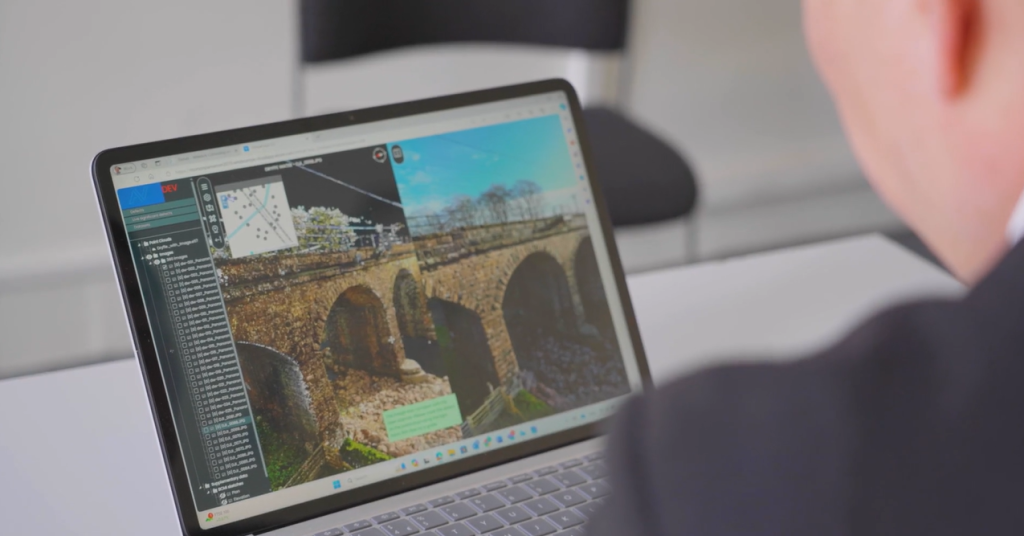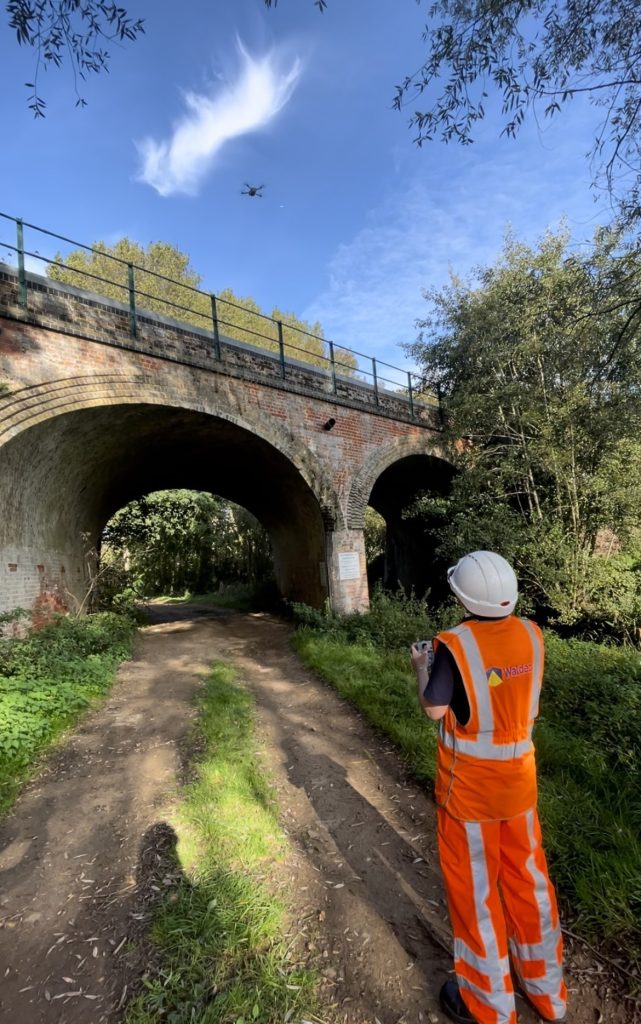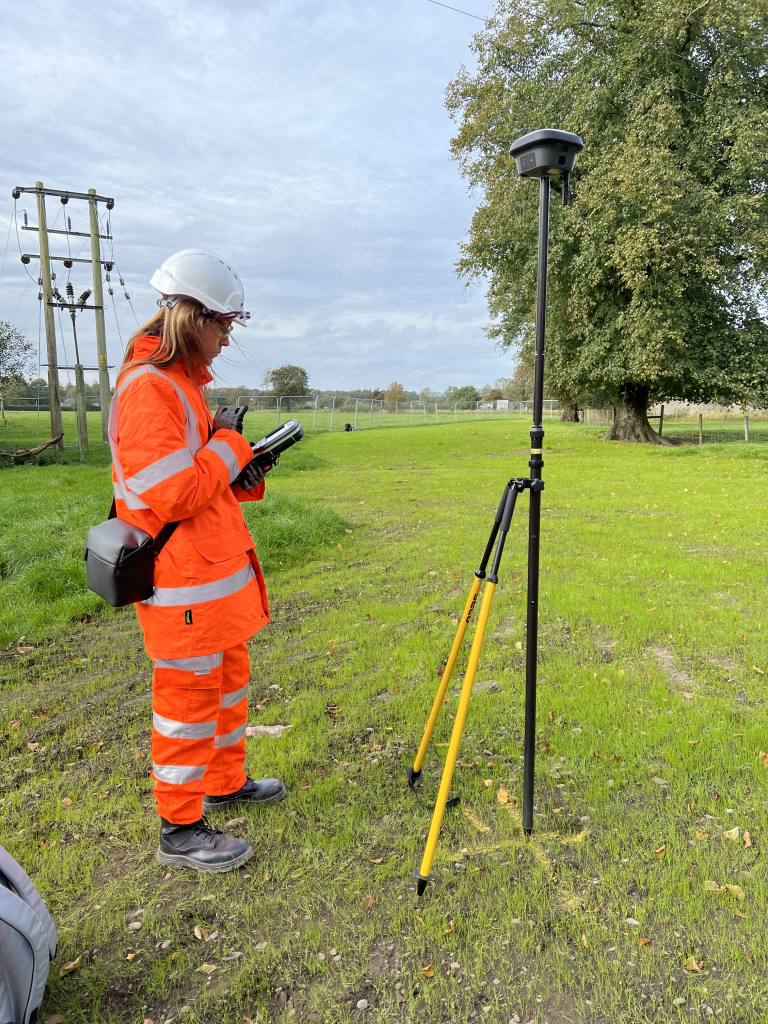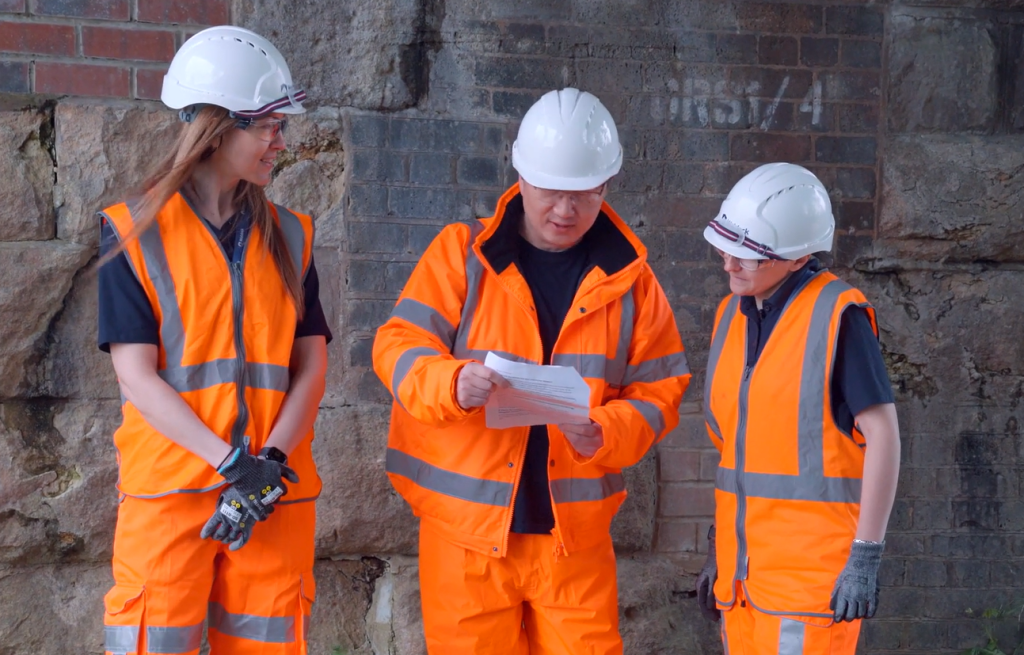Network Rail, Panoptic Bridge Management
Working collaboratively with Network Rail’s R&D team and our partner, Nottingham Trent University, we have developed means to digitalise masonry bridge condition inspections.
Client Brief
Digitising asset management
Network Rail sought to digitalise the condition monitoring of their extensive asset portfolio to enable objective, data-led decision-making. Their aim was to reduce reliance on traditional, subjective methods by adopting advanced technologies that support the creation of a ‘Digital Railway’.
A key focus was on developing a scalable digital solution for the condition monitoring and lifecycle management of their 29,000+ bridge assets.
This approach would allow asset care teams and project engineers to make better-informed decisions across the full lifecycle of each structure, delivering both operational efficiency and long-term value.
Project Overview
Digital railway strategy
Morson Praxis, in collaboration with Nottingham Trent University, have worked closely with Network Rail to design and implement digital techniques that improve upon current asset monitoring and assessment methods.
The project has centred on advanced data collection methods and applying the data to support machine learning, artificial intelligence, and automation of BIM models. These models are integrated into Network Rail’s wider ‘Digital Railway’ strategy and asset management systems.
Now in its third phase, the latest project continues to refine the solution, focusing on scalability and deployment, with the goal of delivering lasting digital transformation across Network Rail’s bridge portfolio.
Image Gallery
From concept to completion, a truly multi-disciplinary solution.





Our Solution
A 'Golden Thread' approach
Focusing on employing a ‘golden thread’ approach to the data which is collected, the team worked collaboratively with Network Rail to understand the many limitations of the current methods, and how through a data-focussed approach this could be both improved and leveraged to provide wider reaching asset care benefits for Network Rail, as well as very much supporting their ‘Digital Railway’ aspirations.
Undertaking trials over a cross section of masonry bridge and viaduct assets, the team focussed on real-world application of digital data collection and its use within an engineering environment.
The initial trials worked to understand how engineering decisions could be better informed through the use and analysis of digital data. The beta development of the solution remains the focus of the latest project, which is also targeting the scalable deployment of the approach overall.
Results
Leading digital surveying
The adoption of leading digital surveying technologies offered many benefits to the approach overall. Previously, individual photographs would be taken of defects which were they appended to reports with engineer’s annotation. Whilst these do provide individual instance snap shots of the defect, they fall short in offering and holistic view of the asset to better understand their location and frequency.
Capturing geolocated 360-degree data sets of the structure and its immediate surrounding area has enabled the viewing of high-definition imagery, which via point cloud technology has allowed measurable and comparable assessments to be made of each assets condition. These added benefits support progressive assessments, allowing for accurate understanding of defect progression between surveys.
Benefits
A bespoke solution
A key benefit of the approach considerably reduces the need for boots on ballast, which offers huge improvements from a health and safety perspective, enabling engineers to review and analyse the data remotely.
Working with these data sets has enabled the team to research and develop how machine learning techniques for object and defect recognition can also be integrated to support engineering assessments and the categorisation of the defects. The same approach has also enabled the team to explore visual programming techniques which automate the production of BIM Models from the survey data sets.
The project and technology utilised has led to wider conversations within Network Rail, seeing the team develop a bespoke asset viewing solution to maximise the engineering potential of this new approach.
Testimonials
Hear from the experts
Veronica Ruby-Lewis, Associate Director at Morson Praxis shared:
“Being able to support Network Rail with their future aspirations and to take their visions into demonstratable working solutions over the past two years has been a prestigious project for Morson Praxis. The project has been founded on a strong and collaborative working relationship, which has certainly enabled the teams to deliver the best results.
“As we continue to work through the scalability of the approach and solution overall, we are working with Network Rail to release all of the ‘value adds’ which the works offer for the wider periphery of Network Rail stakeholders.
Nataliya Aleksieva, Senior Engineer at Network Rail shared:
“The trials undertaken by Morson Praxis and their university partner on 50 masonry bridges in 2020 were not only to demonstrate the capability of the technologies but also to enable Network Rail engineers to holistically evaluate the condition of the structures off-site in their real environment. The project team were able to combine point cloud surveys undertaken by drones and terrestrial laser scanning with sufficient accuracy which provided a complete survey for the structures.
“The team has developed algorithms to create BIM models directly from the surveys to support the automation of the existing processes for determining the condition marking index for the structures and the development of the digital railway twin.
“This development is expected to bring significant benefits to Network Rail by minimising the traffic disruption, reducing boots on ballast, and obtaining richer data on our assets which will enable NR engineers to evaluate their condition more accurately.”

